| Časopis Umělec 1999/1 >> Start do budoucnosti | Přehled všech čísel | ||||||||||||
|
|||||||||||||
Start do budoucnostiČasopis Umělec 1999/101.01.1999 David Allen a Dominic Eichler | berlín | en cs |
|||||||||||||
|
"Post-wall Berlin is presently undergoing a massive reconstruction designed to make the German capital the commercial and political center of Eastern Europe. This undertaking has its cultural component, of course: it is the stated aim of the powers that be that Berlin should be a cultural capital as well. Right on time, the first Berlin Biennale opened on Sept. 28, 1998, and will run in its present form until Jan. 3, 1999.
Groundwork for the project was laid by Berlin-based curator Klaus Biesenbach, who is also a curator at P.S.1 and was a jury member at the last Venice Biennale. Biesenbach additionally enlisted the help of Guggenheim Museum curator Nancy Spector and Hans Ulrich Obrist, who is affiliated with ARC, Paris. Central to the Biennale is the exhibition Berlin/Berlin, which features work by more than 70 artists, architects and performers. Focusing on Berlin itself as a city in transition and “artists who have been engaged with Berlin in one way or another,“ the show is also billed as “a stock-taking of the most important trends and movements of the ’90s.“ As such, most of the participating artists will be familiar from other international megashows. Don’t expect a showcase of the new young German artists. In a manner similar to Documenta X, Berlin/Berlin is augmented by several less traditional curatorial sections. “Congress 3000“ consisted of talks, performances, fashion shows and film screenings in a three-day marathon event at Haus der Kultur der Welt. “Plattform“ was intended to embrace groups with “a vigilant and critical attitude“ working outside the commercial gallery system. Another project, dubbed “Flanerie,“ has so far amounted to seven artists documenting their experiences in the city via inserts in the catalogue. Berlin/Berlin has three unusual venues, all within walking distance of each other in the center of Berlin in the former East German sector. The tottering but impressive Akademie der Künste, a Beaux-Arts exhibition facility next door to the Brandenburg Gate, was built in 1905 but is now in disrepair. The Postfuhramt is a disused post office of even older vintage dating to the 1870s. The most presentable of the three is the four-story Kunst-Werke, currently undergoing a renovation that has included the addition of an asymmetrical, glass-facaded cafe designed by Dan Graham. Kunst-Werke is the Biennale’s home base. Founded in 1991 by Biesenbach and several others, Kunst-Werke started life as a modest run-down alternative space but has aims to become Berlin’s equivalent to institutions like the ICA in London. Since the fall of the wall, atmospheric public ruins like the Postfuhramt and Akademie have frequently been sites of temporary exhibitions. Artists and curators have mounted shows in bunkers, cellars, former police barracks and bombed out department stores. The Biennale aligns itself with such initiatives — perceived as the cradle of Berlin’s current artistic vibrancy — though none of those had anything remotely near the ca. $1.5 million budget of the Biennale, which was raised through a combination of public and private sponsorships. Berlin/Berlin gains a certain unity from architect Walter Musacchi’s plywood walkway, which plots a route through the entire Postfuhramt like a rough pine mini-golf course, and also runs up to the entrances of the other two venues. In a city that’s full of construction sites surrounded by the same material, and likely to remain so for at least a decade, it is an obvious and somewhat awkward metaphor that is nevertheless effective. Awkward footing could also describe the work of Markus Schinwald, who at 24 is the youngest participant in the Biennale. His quirky hybrid shoe sculptures, a number of which were on view at Kunst-Werke, were also promoted in a chic fashion ad on a giant digital screen on nearby Alexanderplatz. His products include alligator loafers mated with a pair of sneakers to form Snakers; “kitten“ heels attached to flip flops called Belly; and a combination of sneakers and clogs dubbed Airwood. A definite success, Schinwald’s shoes are interdisciplinary, communicative and sexy. Jonathan Meese’s chaotic, encyclopedic installation, Ahoi de Angst (1998), fills a room in the Postfuhramt, overwhelming its decayed Victorian decor. Entering the work is like stumbling through an Escher staircase on a controlled substance. The walls are covered with posters and drawings of the artist’s favorite celebrity legends in a cacophony of hipster overload: Romi Schneider, Joe Dallesandro, Oscar Wilde, Sean Connery, Nina Hagen, R. W. Fassbinder, Claudia Schiffer... along with portraits of the artist in various guises. It’s like a malevolent poster-psycho-world rushing off in a hundred directions at once. Another anarchic performance/installation John Bock’s Liquidäts Aura Aromaport Folio (1998), is constructed like a set for a trashy Sesame Street performance, with debating Dadaesque leg puppets appearing through holes in an elevated floor. Over at Kunst-Werke is a similarly berserk but less focused pop mess by the group Honey Suckle Company called HSC3D. Low-tech videos of wacky performances shared space with junky sculptures made of cellophane and cardboard. Like many post-performance residue pieces, the work is disappointing — why not just clean up afterwards? The kids loved it though, as they did Carsten Höller’s Valerio I and Valerio II, a pair of twisting cylindrical stainless steel slides connecting the floors of Kunst-Werke. One of the slides goes out the window down to the first floor, and may be retained as a permanent fixture, serving as the building’s fire escape. Höller also has a work at the Postfuhramt called Kinder Demonstration For The Future (1992) — a black-and-white slide show of children holding placards displaying the word “Zukunft,“ or future, as if demonstrating for the unknownable and inevitable. Another highlight at Kunst-Werke is a laconic video by Daniel Pflumm, dryly titled Questions and Answers (1998). What at first seems to be a still of two CNN commentators turns out to be a loop, with the couple caught mid-frame, blinking endlessly and accompanied by an original techno soundtrack. Pflumm is a local who has made his mark with a couple of alternative clubs, Electro and Panasonic, and with a record label — all collaborative projects borrowing elements from art, music and club culture. The Postfuhramt has one grandiose space, a large circular lobby on the second floor topped by a stuccoed and water-damaged cupola. Installed in this space are works by Olafur Eliasson and Tobias Rehberger, who are both represented by Berlin’s Gallery Neugerriemschneider. Eliasson’s runaway electric fan, Ventilator (1998), is like a pendulum suspended by a wire from the dome’s apex, flying about aimlessly and dangerously, exploring the limits of its own terrain. Beneath the circling fan, only just out of harm’s way, are Rehberger’s Blumenvase (1995) — portraits of dealers and artists as exotic vase-and-flower combinations. Those portrayed — including Antjie Majewski, Sharon Lockhart, Jorge Pardo, and Elizabeth Peyton — collaboratively chose the types of flowers for their bouquet, sight unseen. Rehberger’s second work for the Biennale also involves people and pretty things. Bauchkette (1998) is a gold personalized waist chain, sponsored by a very game German jeweler and worn by everyone working as part of the Biennale organization — an erotic chain gang. Come next January, the pieces must be returned but will forevermore bear the wearer’s name as recompense. In its „intimate“ aspect, the work is a more expensive remake of Rehberger’s Venice Biennale piece, for which pavilion attendants wore flesh-colored underwear that the artist provided. Most of the works at the Postfuhramt each had their own small dilapidated ex-office, and many suffer from the isolation, or from appearing too slight in their setting. This situation worked best for more introverted pieces, such as Ugo Rondinone’s installation, So Much Water, So Close to Home (1998). A yellow filter covers the room’s window, converting Berlin’s gray days into sunlight. Speakers play a melancholic soundtrack of velvet guitar, a reassuring voice sings “everyday’s sunshine“ and a video shows people turning their backs and closing doors. Andreas Slominski’s work also functions well at the Postfuhramt, playing off its former status as a “depot.“ Enough Paint to Paint the Funkturm (an Eiffel Tower-like radio tower on Berlin’s west side) consists of pallets piled high with 30 kg buckets of paint, a reminder of the building’s current temporary use. Grouped together in the more epic-scaled halls of the Akademie der Künste are works by Manfred Pernice, Douglas Gordon, Sarah Sze, Thomas Demand, Wolfgang Tillmans and Rirkrit Tiravinija. Several of them refer to historical events that occurred at the site. Albert Speer apparently exhibited the models for the proposed Nazi reconstruction of Berlin as his new city, Germania, at the art academy. Manfred Pernice responded directly with a mammoth five-meter-high chipboard model of an apartment and office building (origins unspecified) titled Hauptdose, which translates as „main outlet“ — a comment relating to building big throughout history. "
01.01.1999
Doporučené články
|
|||||||||||||
|
04.02.2020 10:17
Letošní 50. ročník Art Basel přilákal celkem 93 000 návštěvníků a sběratelů z 80 zemí světa. 290 prémiových galerií představilo umělecká díla od počátku 20. století až po současnost. Hlavní sektor přehlídky, tradičně v prvním patře výstavního prostoru, představil 232 předních galerií z celého světa nabízející umění nejvyšší kvality. Veletrh ukázal vzestupný trend prodeje prostřednictvím galerií jak soukromým sbírkám, tak i institucím. Kromě hlavního veletrhu stály za návštěvu i ty přidružené: Volta, Liste a Photo Basel, k tomu doprovodné programy a výstavy v místních institucích, které kvalitou daleko přesahují hranice města tj. Kunsthalle Basel, Kunstmuseum, Tinguely muzeum nebo Fondation Beyeler.
|







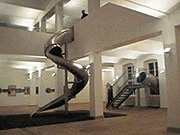













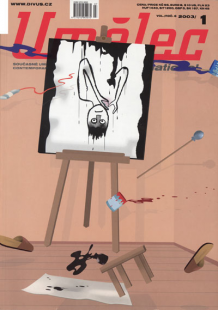




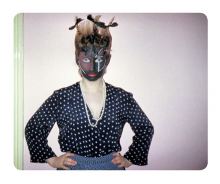
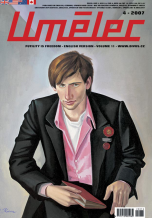
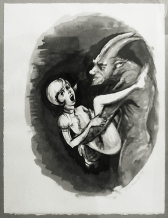
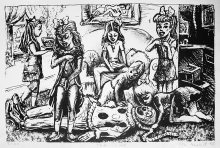


 23.05.-17.06.2017 STU MEAD & MIKE DIANA IN PARIS
23.05.-17.06.2017 STU MEAD & MIKE DIANA IN PARIS
Komentáře
Článek zatím nikdo nekomentovalVložit nový komentář